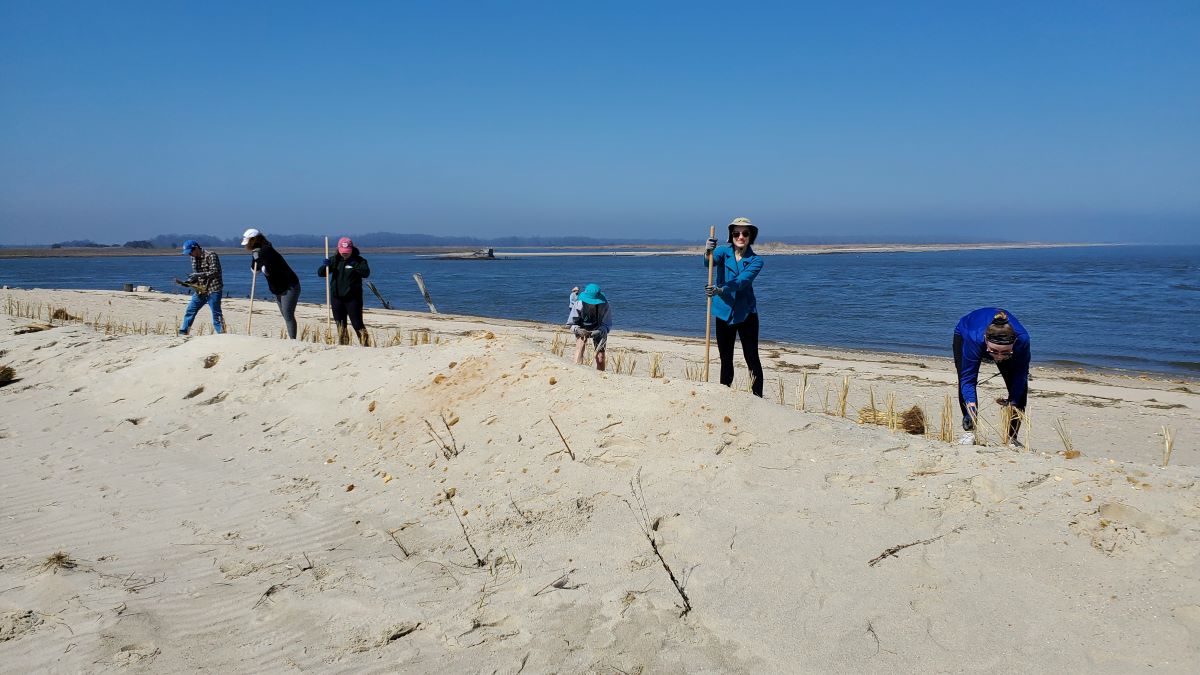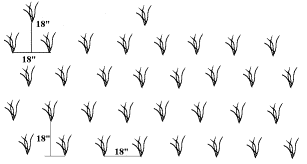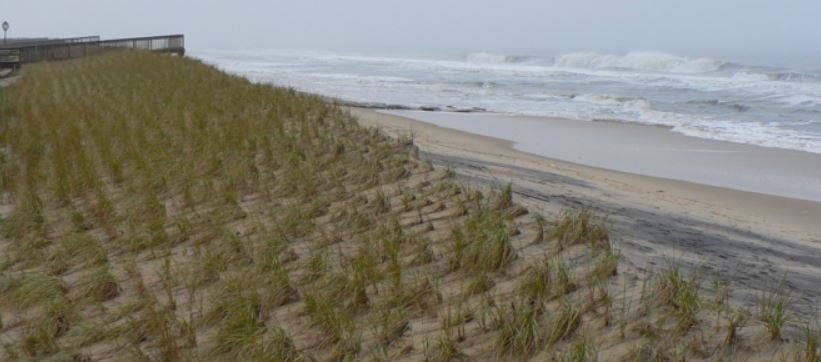Volunteers are the backbone of Delaware’s shoreline stabilization. Every spring since 1990, except when pandemic conditions prevented it, dedicated volunteers have stabilized Delaware’s sand dunes by planting more than 5 million stems of Cape American beach grass along ocean and bay beaches.
The 2026 Annual Beach Grass Planting is scheduled for Saturday, March 21, from 9 a.m. to Noon. Registration for the 2026 Annual Beach Grass Planting will open in Late January or Early February.

Jennifer Pongratz
Environmental Scientist
302-608-5500
Learn More
Sand dunes are more than beautiful. Sand dunes provide protection against damaging coastal storms by absorbing wave energy. Sand dunes offer protection by acting as major sand storage areas which replenish sand to eroded beaches during storm events. Without sand dunes, storm waves rush inland and flood properties.
Dunes are unstable — subject to the ravages of wind and water. Beach grass helps build and stabilize dunes. Blades of grass help trap wind-blown sand which can create new dunes and expand existing dunes.
To promote new dune growth and to help protect communities from the ravages of flood waters, we must limit — and sometimes prohibit — people and vehicles from crossing dunes in all but designated areas. Especially as applies to beach grass, which has thick, brittle stalks that can easily be broken and destroyed by pedestrian or vehicular traffic.
Please help conserve Delaware’s beaches by telling friends and family about the importance of beach grass, and reminding them to stay off of the dunes.
If you have questions about beach grass planting, or would like additional information about it, contact Jennifer Pongratz at 302-608-5500 or by email.
There are simple steps you can take plant beach grass that will thrive and help protect dunes and beaches. Beach grass should be planted while dormant, between Oct. 15 and April 1.

Beach grass is sold in bundles of culms (stems).
Plant two stems per hole. Placing more than two stems per hole will increase competition for nutrients causing loss of plants.
The holes you plant stems in should be spaced 12 to 18 inches apart. There should be 12 to 18 inches between rows.
Rows should be staggered to provide maximum wind erosion control.

Step 1: Open a hole 10 to 12 inches deep with a pointed stick or spade. Place 2 stems, with roots facing down, in the hole to a depth of 8 inches. If plants are not planted 8 inches deep, they may dry out or be blown out by the wind.
Step 2: Press next to the plant to firm the sand and eliminate air space in the root zone.
Newly planted and old beach grass responds well to fertilizer. Fertilizer should be applied 30 days after planting but not before April 1. For up-to-date fertilizer rates contact your local nursery or the Shoreline & Waterway Management Section.
Related Topics: beach grass, beaches, ocean and coasts, planting, volunteers, watershed, waterways